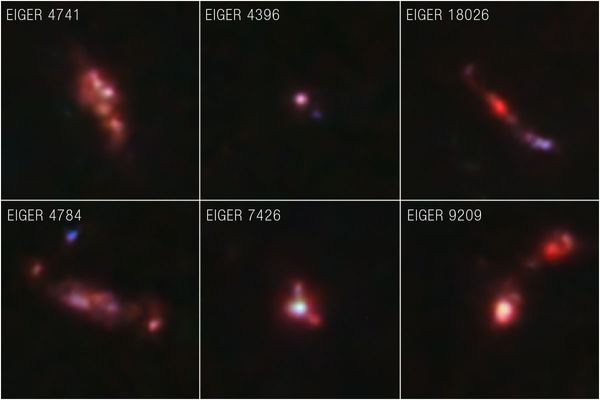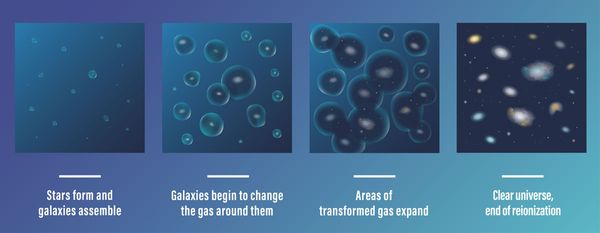
While the James Webb Space Telescope is a secular achievement, the pioneering telescope nevertheless conjured up that Biblical imagery of "Let there be light!" with its most recent revelation: There could have been hundreds of ancient galaxies at the universe's beginning, instead of only a handful, and we can still see some of that light that shone at the time.
Perhaps the most notable detail from the findings is that the 717 newly-discovered galaxies are much more sophisticated than one might expect from such ancient celestial features.
According to the new study, the newly-detected galaxies came into being as early as 600 million years after the Big Bang. The researchers focused on two regions of the vast sky: A section of the Ursa Minor constellation and another region near the Fornax cluster. They discovered more than 700 young galaxies that allow scientists to get a sense of how all of existence appeared during the earliest stages of its history.
"If you took the whole universe and shrunk it down to a two hour movie, you are seeing the first five minutes of the movie," Kevin Hainline, a lead author of the study and an assistant research professor at the Steward Observatory in Arizona, told reporters and scientists last week at the 242nd meeting of the American Astronomical Society in Albuquerque. "These are the galaxies that are starting the process of making the elements and the complexity that we see in the world around us today."
Perhaps the most notable detail from the findings is that the 717 newly-discovered galaxies are much more sophisticated than one might expect from such ancient celestial features. They span thousands of light years in size and contain complex structures. Although the two regions that contain them have been endlessly examined by previous astronomers, their telescopes simply did not have the power to show them with as much detail and clarity as the James Webb Space Telescope is able to bring to the table.

"What we were seeing before were just the brightest, most extreme examples of bright galaxies in the early universe," Hainline explained when speaking on Monday. "Now we are really probing down to more normal, everyday galaxies in a turbulent young universe."
They may have found clues as to how the dust-filled havoc of the early cosmos was cleared up by literal light.
This is only one step for the space program in its mission to unlock the mysteries of the universe's origins. Although the most prominent details of the study focused on galaxies that existed when the universe was between 370 million and 650 million years old, the international collaboration known as the JWST Advanced Deep Extragalactic Survey (JADES) also looked at the region of the universe from when it was between 500 to 850 million years old. They wanted to see the galaxies that existed during that phase in our cosmic history after the Big Bang.
In the process, they may have found clues as to how the dust-filled havoc of the early cosmos was cleared up by literal light.
Specifically, they found that one out of six galaxies from this region had features indicating that their atoms had been ionized by starlight and then cooled down to be combined with other molecules. This suggests that those early galaxies were creating stars and that these, in turn, added "torrents of ultraviolet protons" into their galaxies.

"These early galaxies were very good at creating hot, massive stars"
"These extreme emission lines are actually relatively common in the very early universe," explained Ryan Endsley, a postdoctoral researcher at the University of Texas who led the second study, during the Monday presentation. "Almost every single galaxy that we are finding shows these unusually strong emission line signatures indicating intense recent star formation. These early galaxies were very good at creating hot, massive stars."
This was not the only major astronomy news to recently come from the James Webb Space Telescope. Also this week, scientists using the telescope discovered the most extensive spray of water ever seen in space. At 6,000 miles long, the spray coming from Saturn's frozen moon Enceladus could reach from Los Angeles to Buenos Aires. In addition to establishing Enceladus as "the prime source of water across the Saturnian system," the researchers wrote that this discovery demonstrates "the unique ability of JWST in providing critical support to the exploration of distant icy bodies and cryovolcanic plumes," particularly as humanity continues to "prepare to send new spacecraft into the outer solar system."
The telescope has made myriad other discoveries since it was unveiled last year. In February, it observed an early galaxy, the so-called "Sparkler," that resembled our own Milky Way in its infancy. During that same month, the telescope found six massive galaxies whose very existence is a conundrum since they appear to be older than any galaxies ought to be given what we know so far about the universe.







